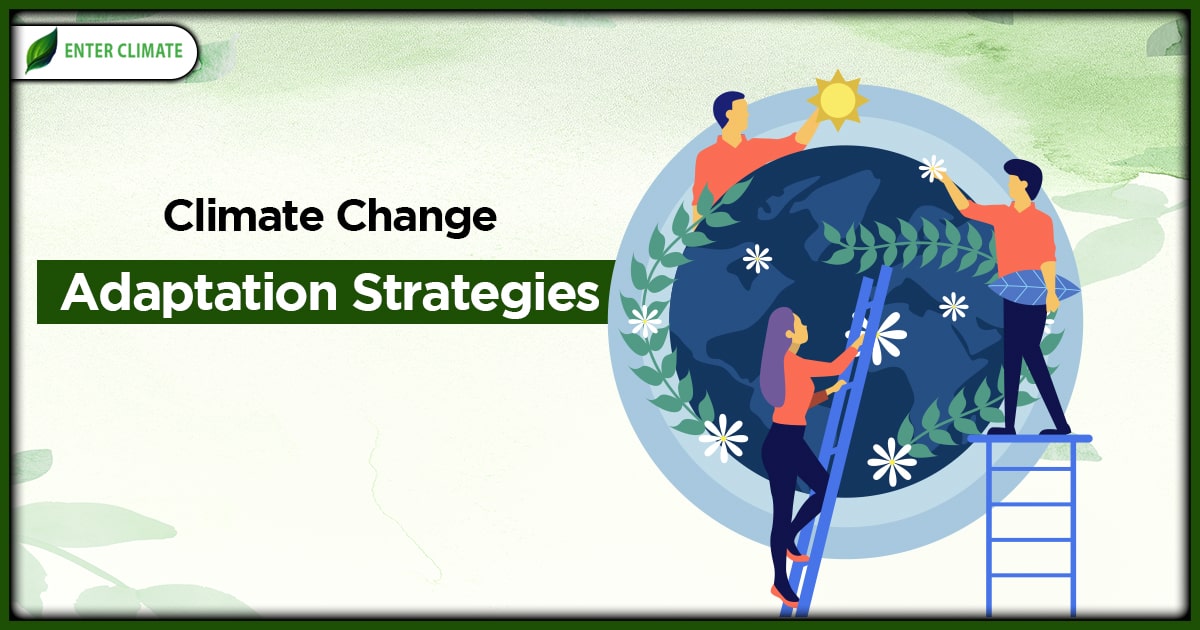Report on U.S. Law Enforcement Efforts to Combat Female Genital Mutilation in Alignment with Sustainable Development Goals
Introduction: Operation Limelight USA and SDG 5
In a targeted effort to advance Sustainable Development Goal 5 (Gender Equality), specifically Target 5.3 concerning the elimination of all harmful practices, U.S. Immigration and Customs Enforcement (ICE) Homeland Security Investigations (HSI) and U.S. Customs and Border Protection (CBP) conducted an awareness event at Atlanta Hartsfield-Jackson International Airport on May 22-23. This initiative, part of “Operation Limelight USA,” aims to educate the public on the illegality and severe consequences of Female Genital Mutilation (FGM), a practice that violates the fundamental human rights of women and girls.
Operation Limelight USA is an extension of a pilot program developed by HSI’s Human Rights Violators and War Crimes Center (HRVWCC). It is modeled after the United Kingdom’s “Operation Limelight” and represents a critical domestic strategy to deter FGM. Following a similar event at New York’s JFK airport in 2017, the Atlanta outreach signifies an expansion of efforts to safeguard vulnerable populations and uphold gender equality.
Legislative Framework: Strengthening Institutions for SDG 16
The United States has established a robust legal framework to prosecute FGM, directly contributing to SDG 16 (Peace, Justice and Strong Institutions). The legal basis for these enforcement actions includes:
- Title 18 of United States Code (U.S.C.) §116: This federal law explicitly prohibits the knowing circumcision, excision, or infibulation of the whole or part of the genitalia of a person under 18 years of age.
- Transportation for FGM: Section (d) of the statute, enacted in 2013, criminalizes the act of transporting a minor out of the country for the purpose of performing FGM.
- State-Level Statutes: In addition to federal law, some state statutes criminalize FGM for all persons, irrespective of age, further strengthening the justice system’s capacity to protect individuals.
As stated by HSI Atlanta Special Agent in Charge Nick Annan, “Removing or cutting the genital organs of a female child is a federal crime regardless of whether it’s done inside the U.S. or the child is transported outside the country for that purpose.” This commitment underscores the role of law enforcement in creating just and effective institutions.
Global and National Health Crisis: A Violation of SDG 3 and SDG 5
FGM is a global crisis with severe implications for SDG 3 (Good Health and Well-being) and SDG 5 (Gender Equality). The practice involves procedures that injure female genital organs for non-medical reasons, leading to lifelong physical and psychological health problems.
- Global Prevalence: Over 200 million girls and women alive today have been subjected to FGM, primarily in Africa, the Middle East, and Asia.
- National Impact: The Centers for Disease Control and Prevention (CDC) estimates that approximately 500,000 women and girls in the United States are either victims of FGM or at risk of being subjected to it.
These statistics highlight the urgent need for interventions like Operation Limelight USA to protect the health and rights of at-risk populations and eliminate this form of gender-based violence.
Operational Strategy and Inter-Agency Collaboration
The operational strategy of Operation Limelight USA involves a multi-faceted approach focused on prevention, education, and victim support, aligning with a holistic vision for achieving the SDGs.
- Targeted Outreach: HSI special agents engage directly with passengers traveling to and from countries where FGM is prevalent.
- Public Education: Travelers are provided with informational brochures detailing U.S. laws, the health consequences of FGM, and the severe legal penalties for perpetrators.
- Victim Identification and Assistance: The initiative serves to identify potential victims and violators, providing a direct channel for individuals to report cases or seek assistance.
Challenges to Eradicating FGM and Achieving SDG Target 5.3
Despite robust legal frameworks and dedicated enforcement actions, significant societal and cultural barriers impede progress toward the complete elimination of FGM. These challenges include:
- Cultural and Social Pressures: FGM is often deeply embedded in cultural traditions, making it difficult for individuals to defy community and family expectations.
- Survivor Reluctance: Victims are often hesitant to report the practice or testify against family members due to complex social dynamics.
- Lack of Professional Awareness: Medical, educational, and other professionals may not be adequately trained to identify signs of FGM or may be reticent to report suspected cases.
Enforcement Progress and Upholding Justice
In a landmark step toward accountability and justice, HSI, the FBI, and the Department of Justice achieved the first-ever indictment under the federal law banning FGM in April 2017. This case represents a significant milestone in upholding SDG 16 by demonstrating that the legal system can and will hold perpetrators accountable, sending a clear message that such human rights violations will not be tolerated.
The public is encouraged to contribute to these efforts. Anyone with information regarding victims or perpetrators of FGM should contact the authorities through the following channels:
- ICE Tip Line (Toll-Free): (866) 347-2423
- ICE Online Tip Form: Available at www.ice.gov
SDGs Addressed in the Article
SDG 5: Gender Equality
- The article focuses on Female Genital Mutilation (FGM), which is a form of gender-based violence and a harmful practice targeting girls and women. The efforts by U.S. agencies to raise awareness, deter the practice, and prosecute offenders directly contribute to achieving gender equality and empowering women and girls by protecting their physical integrity and human rights.
SDG 16: Peace, Justice and Strong Institutions
- The article details the enforcement of U.S. federal law (Title 18 of U.S.C. §116) against FGM. This involves law enforcement actions, awareness campaigns about the law, and the prosecution of perpetrators. These activities strengthen institutions, promote the rule of law, and aim to provide justice for victims of this violent crime, which is a core component of SDG 16.
Specific Targets Identified
Under SDG 5: Gender Equality
-
Target 5.2: Eliminate all forms of violence against all women and girls in the public and private spheres.
The article directly addresses this target by focusing on FGM, a severe form of violence against girls. The “Operation Limelight USA” initiative is designed to deter this practice, and the article highlights that FGM is a “federal crime,” with law enforcement seeking “prosecution of anyone subject to U.S. law it finds attempting to engage in its illegal practice.”
-
Target 5.3: Eliminate all harmful practices, such as child, early and forced marriage and female genital mutilation.
This target is explicitly addressed as the entire article is about combating FGM. The text defines FGM, mentions its prevalence (“More than 200 million girls and women alive today have undergone female genital mutilation”), and describes concrete actions like awareness campaigns at airports and legal enforcement to eliminate it.
Under SDG 16: Peace, Justice and Strong Institutions
-
Target 16.2: End abuse, exploitation, trafficking and all forms of violence against and torture of children.
The article highlights that U.S. law specifically protects minors, stating that Title 18 of United States Code §116 prohibits FGM on “a person under 18 years” and also prohibits the “transportation of a minor for FGM.” This legal framework and the enforcement actions described are direct measures to end a specific form of violence and abuse against children.
-
Target 16.3: Promote the rule of law at the national and international levels and ensure equal access to justice for all.
The article demonstrates the promotion of the rule of law by detailing the specific U.S. federal law criminalizing FGM. The mention of “the first indictment under the federal law banning female genital mutilation” in April 2017 serves as a concrete example of the justice system being applied to hold perpetrators accountable and provide a pathway to justice for victims.
Indicators for Measuring Progress
Indicator for Target 5.3
-
Indicator 5.3.2: Proportion of girls and women aged 15-49 years who have undergone female genital mutilation/cutting, by age.
The article provides statistics that align with this indicator. It states, “More than 200 million girls and women alive today have undergone female genital mutilation,” and “The Centers for Disease Control estimates that approximately 500,000 women and girls in the United States are either victims of FGM, or are at risk of being subjected to it.” These figures are used to measure the prevalence and risk of FGM, which is the purpose of this indicator.
Implied Indicators for Target 16.2
-
Number of prosecutions and indictments for FGM-related crimes.
The article implies this as a measure of success by making a point to mention the “first indictment under the federal law banning female genital mutilation” as a significant milestone. Tracking the number of such legal actions would indicate progress in enforcing laws that protect children from this form of violence.
Implied Indicators for Target 16.3
-
Number of reports of FGM made to authorities.
The article discusses the challenge that “survivors are often reluctant to come forward to provide information.” To counter this, it actively encourages reporting by providing the “toll-free ICE tip line at (866) 347-2423” and the “ICE online tip form.” An increase in the number of tips received through these channels could be used as an indicator of increased public awareness and trust in the justice system, which is a step towards ensuring access to justice.
Summary Table: SDGs, Targets, and Indicators
| SDGs | Targets | Indicators |
|---|---|---|
| SDG 5: Gender Equality |
Target 5.2: Eliminate all forms of violence against all women and girls.
Target 5.3: Eliminate all harmful practices, such as… female genital mutilation. |
Indicator 5.3.2: Proportion of girls and women… who have undergone female genital mutilation/cutting. (Article mentions: “More than 200 million girls and women alive today have undergone female genital mutilation” and “approximately 500,000 women and girls in the United States are either victims of FGM, or are at risk.”) |
| SDG 16: Peace, Justice and Strong Institutions |
Target 16.2: End abuse, exploitation, trafficking and all forms of violence against… children.
Target 16.3: Promote the rule of law… and ensure equal access to justice for all. |
Implied Indicator: Number of prosecutions and indictments under FGM laws. (Article mentions: “the first indictment under the federal law banning female genital mutilation.”) Implied Indicator: Number of reports of FGM made to authorities. |
Source: ice.gov







